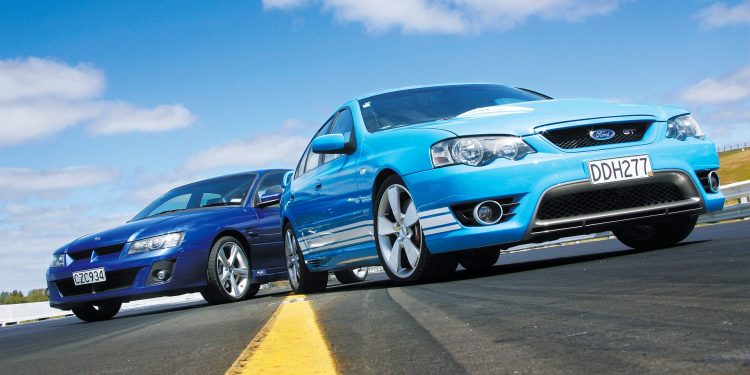2006 HSV Clubsport vs FPV GT review
Words: Paul Owen | Photos: Tom Gasnier
The contest for producing the hottest Aussie V8 has never been closer, and never more challenged by noise and emission standards. Can HSV’s latest 6.0 litre V8 counter FPV’s new six-speed automatic gearbox? We compare the similarly priced HSV Clubsport and FPV GT.
The evolution of the great Australian V8 sport-saloon became a revolution in the middle years of the opening decade of the 21st Century. First, HSV unleashed the LS2 V8 – the long-awaited 6.0 litre Corvette engine that placed nearly 400bhp on the HSV driving menu – and this swung the performance pendulum decisively in the favour of the special Holden. When, in July, we last compared a FPV GT-P against a new VZ-series Clubsport R8, the LS2 fair blew the FPV’s 5.4 litre ‘Boss 290’ engine into the hay paddock, despite an on-paper deficit of just seven kilowatts. In terms of true peak power, the FPV V8 lagged behind the HSV by quite a bit more, due to the different methodology adopted by Ford and Holden when they measure the power of their engines. Writer, Kyle Cassidy, said at the time:
“In a perfect world, we’d be driving an LS2-powered GT, but then Schapelle’s got a better shot at freedom than that ever happening. We’ve been corrupted by the LS2’s sheer grunt, giving the R8 the narrowest of victories. We await FPV’s reprisal…”
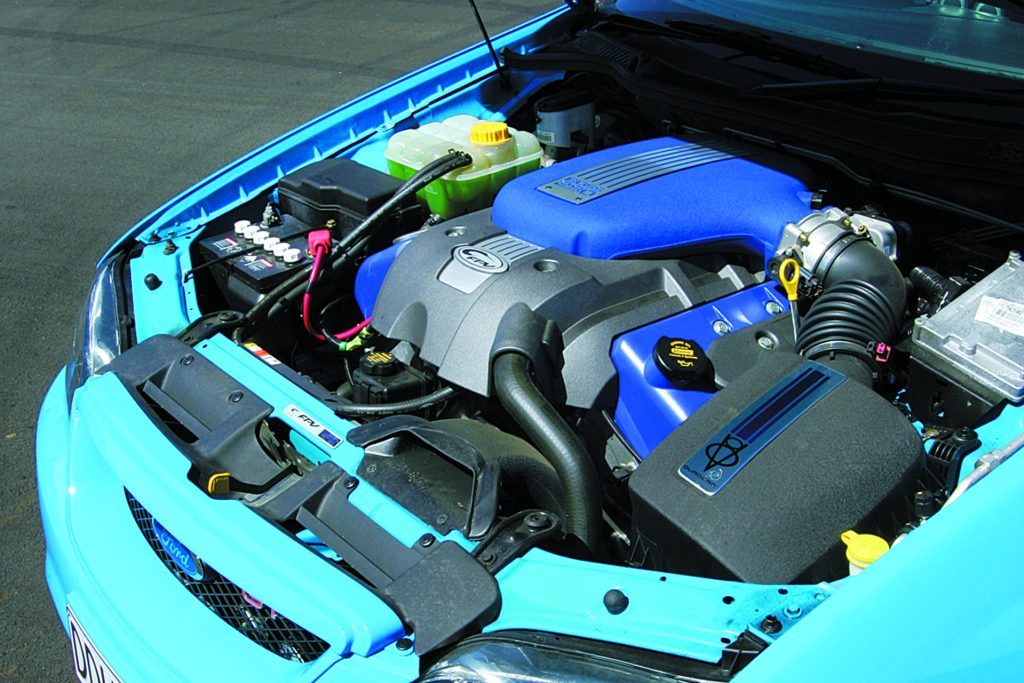

As expected, the counterattack from the True Blue camp didn’t take long to occur. Enter the BF Falcon upgrade to the FPV range. Despite appearing to be a stop-gap, facelifted measure, designed largely to differentiate a BF FPV from a BA MkII version on the street, it won substantial engineering improvements for the entire Falcon family. Headlining these was the new ZF six-speed automatic gearbox, which was added as an optional transmission for most models. The suave and slick ZF was formerly the preserve of vehicles of luxury brands, and Ford Australia became the first mainstream car company in the world to offer its excellence to its customers. But don’t get the idea that this shootout hinges primarily on whether the power advantage of Australia’s biggest V8 can overcome the increased efficiency of what many consider to be the world’s finest automatic transmission, for the BF upgrade to the FPV GT’s powertrain consisted of much more than the addition of a new gearbox to the two-pedal versions: the Boss got quite a spruce-up as well.
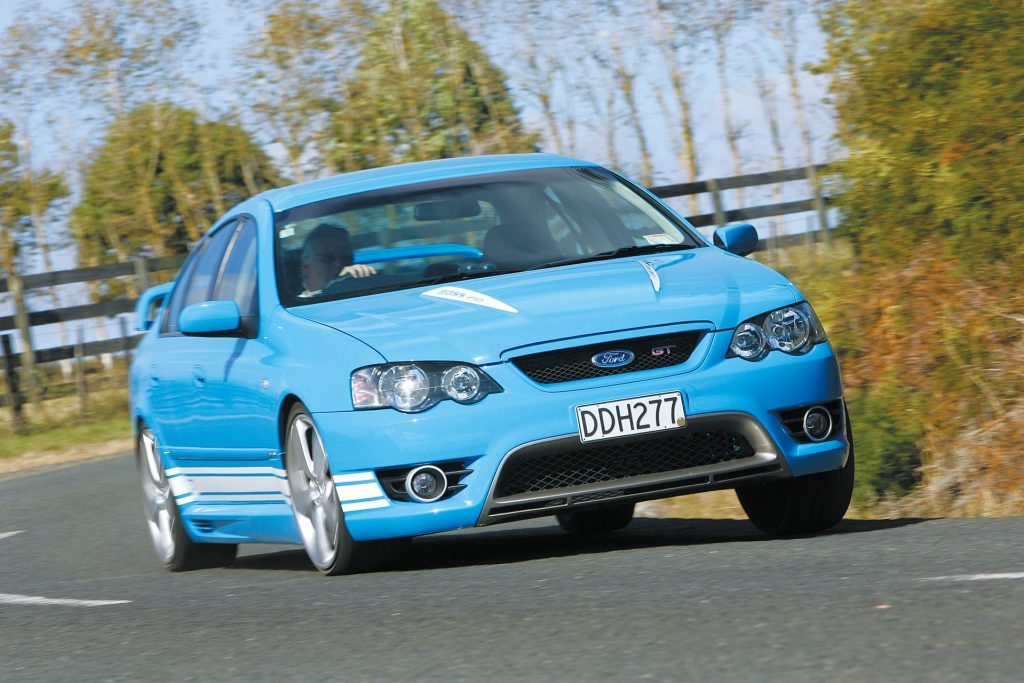
In terms of peak power and torque figures, the status quo remains; but there’s a considerable difference in how the 5.4 now goes about its business. It carries the same big stick, but talks in more hushed tones. It’ll burn rubber with impunity, but uses a smaller amount of fuel than before. With the reduction in gas use come corresponding cuts in harmful emissions. The Boss might still chew tobacco and indulge in illicit gunplay like before, but does so in a less overt and politically offensive fashion. While the FPV GT would still have a hard job convincing the Green Party that it is a more environmentally friendly vehicle, a lot of work has gone into getting it to meet the new ADR 79/01 design rule – a legislative mirror of the Euro III directive in the Old World – that went into force across the Tasman at the start of this year.
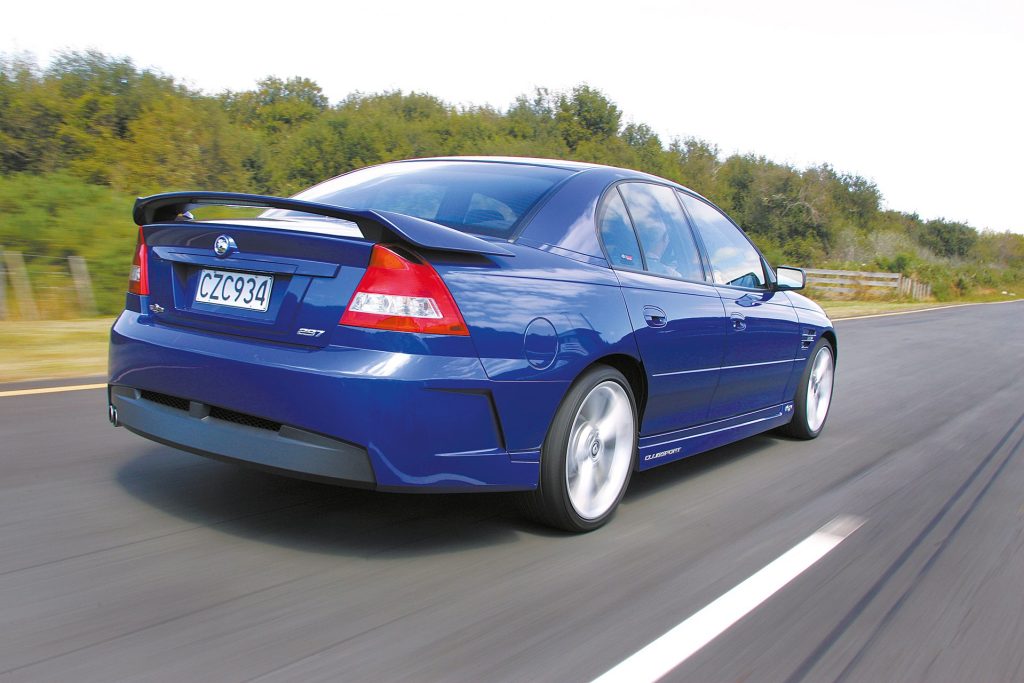
FPV insiders have called the V8 clean-up project ‘Emission Possible’, a codename worthy of a second glance. Considering the difficult task at hand – maintaining the V8’s peak power and torque at previous levels while bunging up its lungs with more smog-busting tech – was not an impossible mission speaks volumes for the fine work done by the FPV engineers. In this they had the opportune assistance of their new engineering partners, Prodrive (best known for leading Subaru’s efforts in the World Rally Championship).
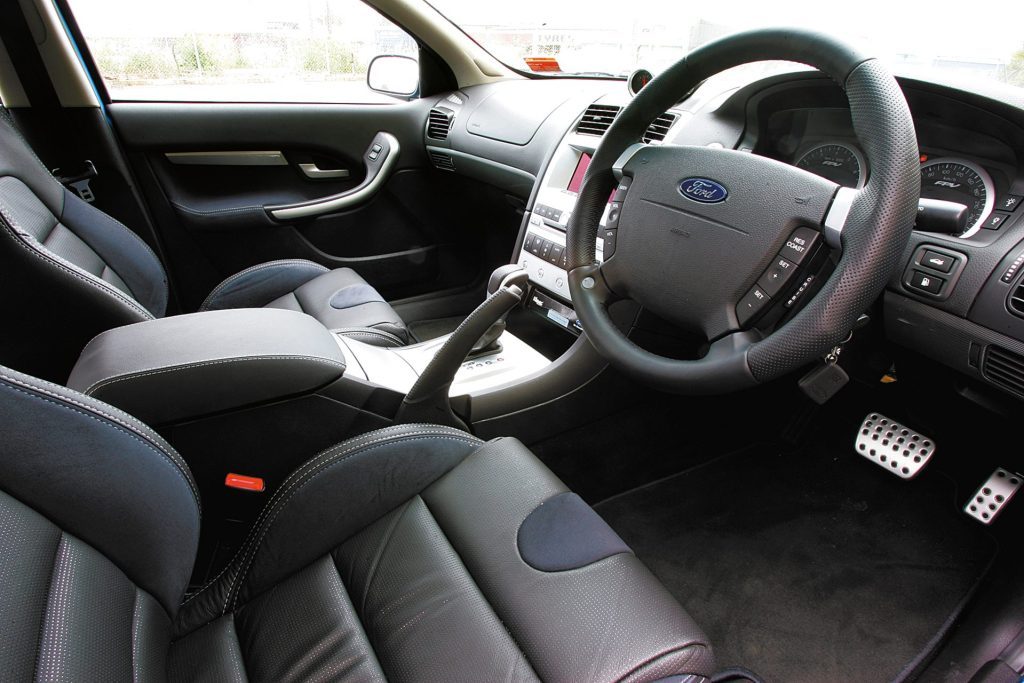
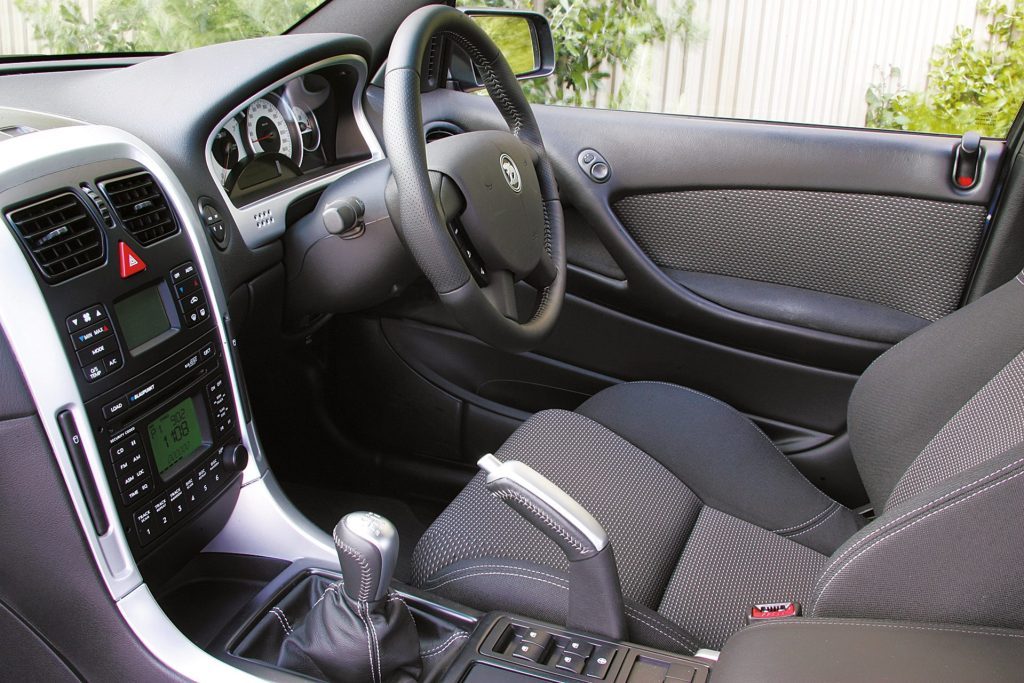
Not only did Aussie V8s have to pollute less in 2006, there was also a new drive-by noise test to meet. The advent of the ADR 83/00 standard, which stifles production exhaust systems from 77 to 75dB, signals boom times for aftermarket exhaust manufacturers. Where the big Aussies once roared, they now whisper. Both the GT and Clubsport seem weak echoes of themselves, to the extent that many Kiwi buyers will surely be making appointments with the purveyors of fine-sounding pipes from the likes of Remus (see feature, page 94) and Manta.
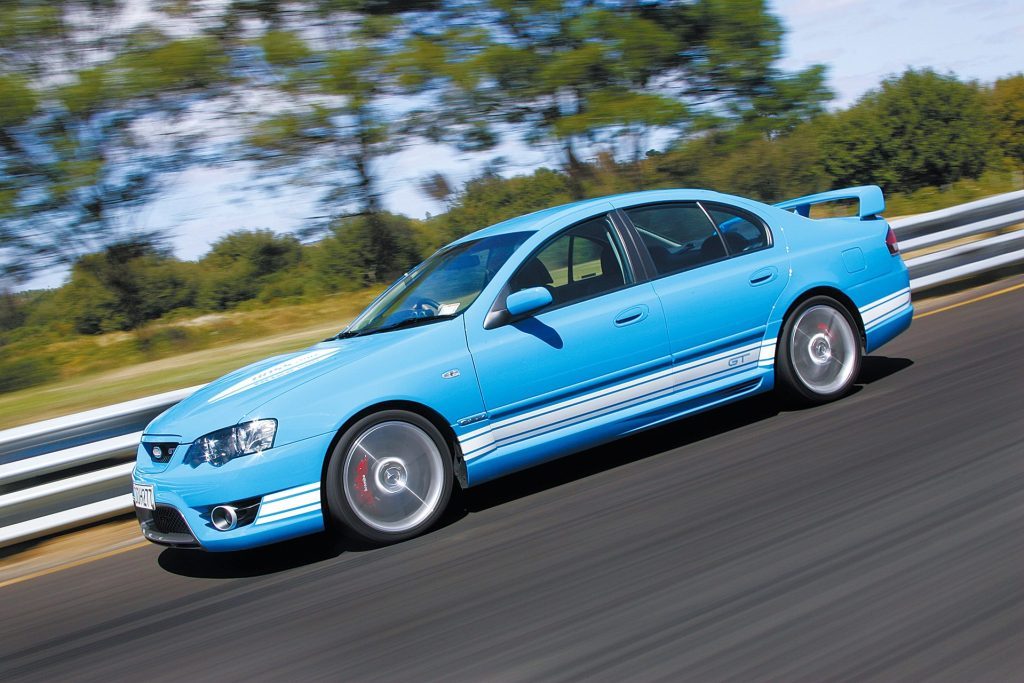
Of the two cars in stock form, the FPV is best at retaining the rumble so beloved of bent-eight buyers. To offset the increase in exhaust back pressure created by the extra pollution-reducing measures, the Prodrive engineers have fashioned a much larger dual-intake airbox, its volume now more than doubled (13 litres versus the previous five-litre design). At the other end of the cylinder head, the new four-into-one exhaust headers are much like those of a racecar, in the way they encourage the flow of exhaust gas. This next runs into twin two-inch pipes, and an intermediate silencer box, before joining the atmosphere in style via new tri-flow silencers and six-inch twin exits featuring an attractive trapezoid design. It’ll be a strong-willed GT buyer that’ll dump this stock system for something aftermarket.
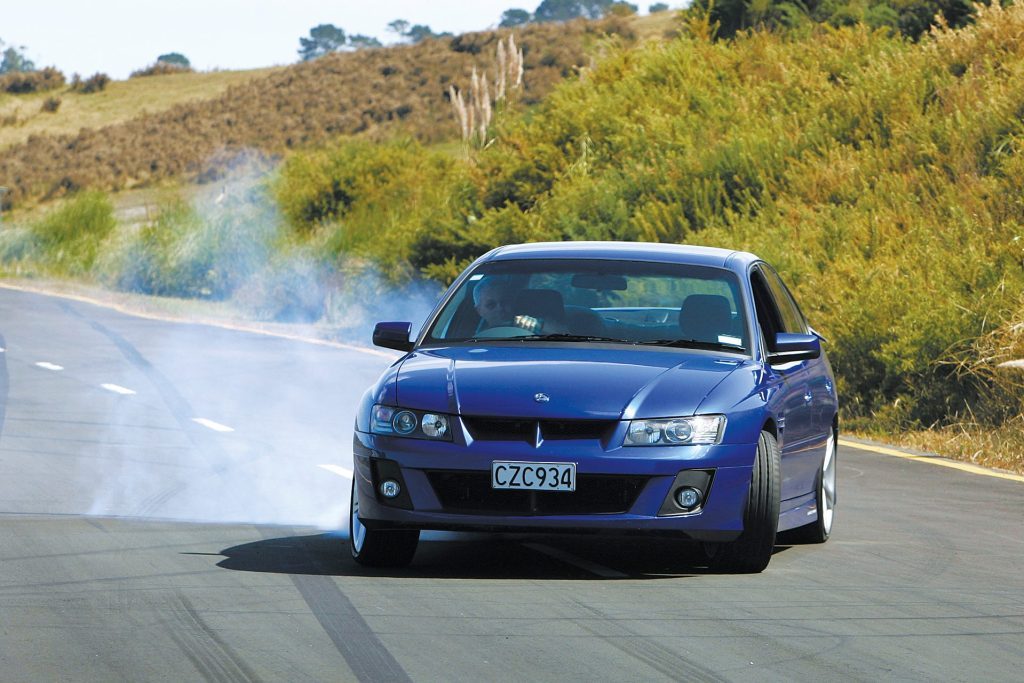
Clubbie fans will be seeking exhaust mods as soon as possible, however – if their dealers haven’t already beaten them to it in an effort to attract business. For in adopting existing Corvette solutions, HSV may have had an easier ride to meeting the new standards, but less thought has been given to the emotive aural appeal of the exhaust and induction systems. As a result, while the FPV rings out like Mount Panorama on a certain Sunday in October, albeit at a lower volume than usual, the HSV engine sounds more like it’s under water.
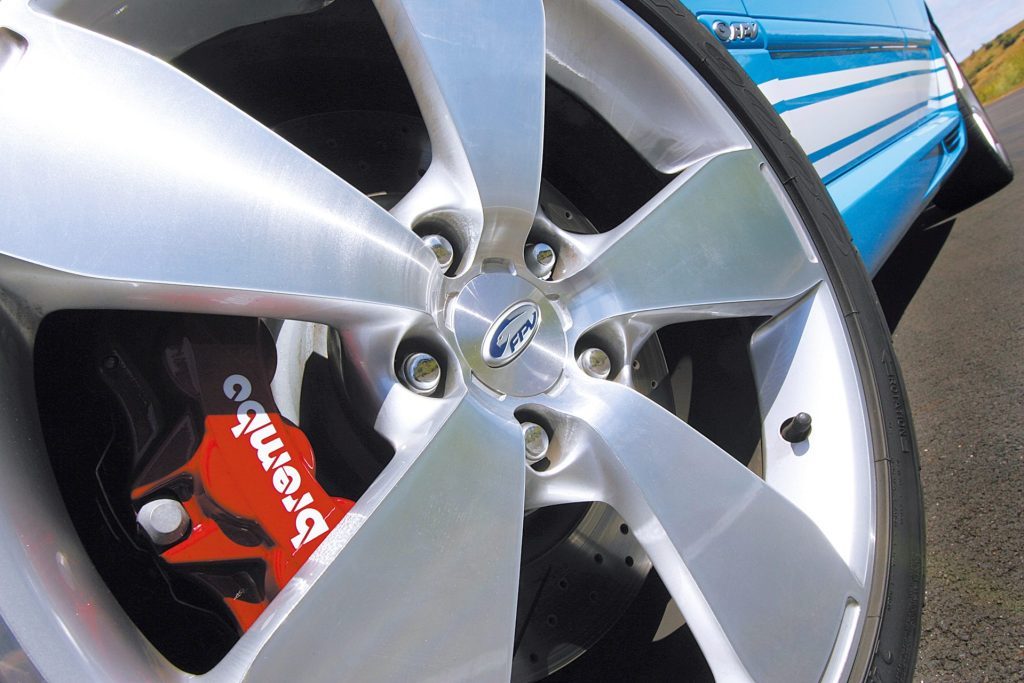
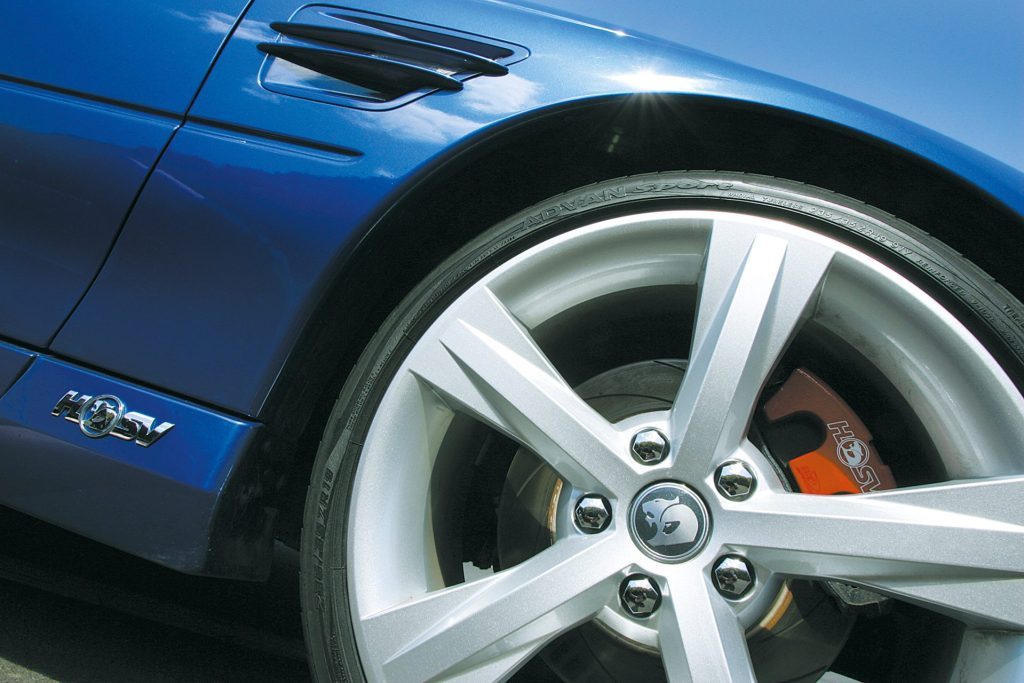
Just a few months ago, this would not have troubled HSV buyers. They could always look to the performance advantage of the LS2 V8 for assurance that they’d bought the better car. But if we’re talking automatic powertrains, that advantage is no longer quite so clear-cut: the FPV’s new six-speed aces HSV’s ancient four-speeder in just about all transmission criteria worthy of consideration. It provides quicker, smoother, more considered shifts thanks to an extra decade’s worth of development and design progress. Even more important is the increased ratio count, and the potential to extract more performance from an engine.

For the two cars are now lineball-close in measured performance, despite the FPV carrying the handicap of an extra 140kg of mass. Although HSV can still claim to have the quicker car in the 0-100km/h sprint, there isn’t much in it. The Clubsport is the lightest of the four-door sports-saloons that the brand offers, zipping to the open-road limit in 5.61 seconds. The GT is just 0.23s behind, helped by the lower first ratio of the ZF, and its lightning-quick shift into second. The tranny has the fatter FPV shaking its booty and doing the boogie-woogie.

The 80-120km/h overtaking performance is also close, and again the call of the VBOX referee goes the HSV’s way. With second gear topping out at 110km/h, the GT shifts quickly and seamlessly into third, and reaches the upper mark in an impressive 3.58s. But no such shift is required by the four-speed HSV, second being enough to cover the 40km/h spread in target speeds. Which, unsurprisingly, makes it the quicker car, by 0.17s.
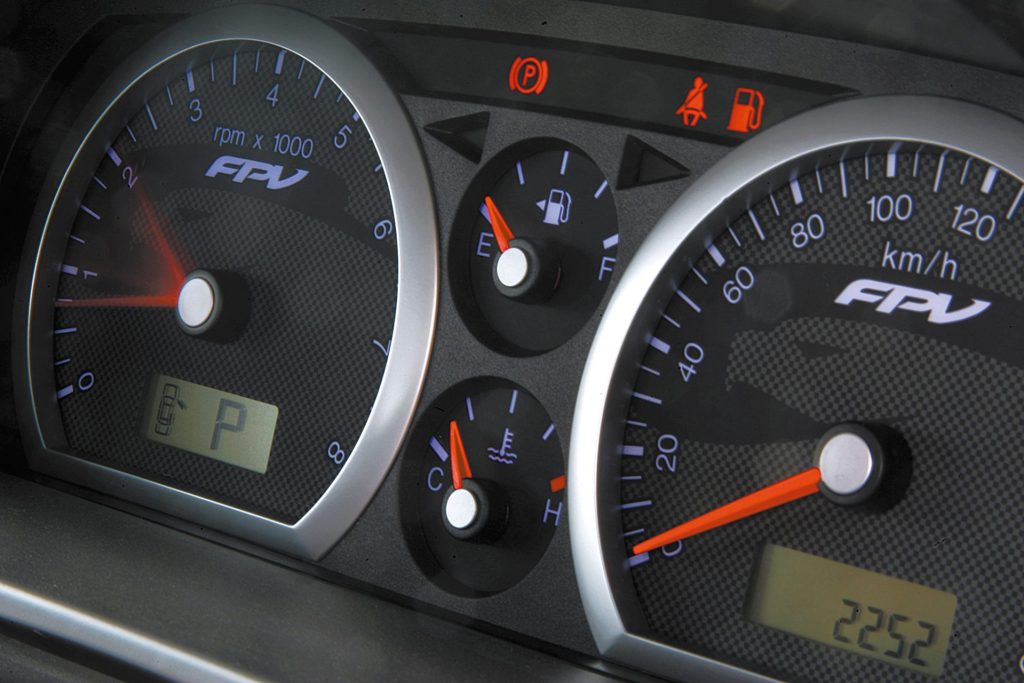
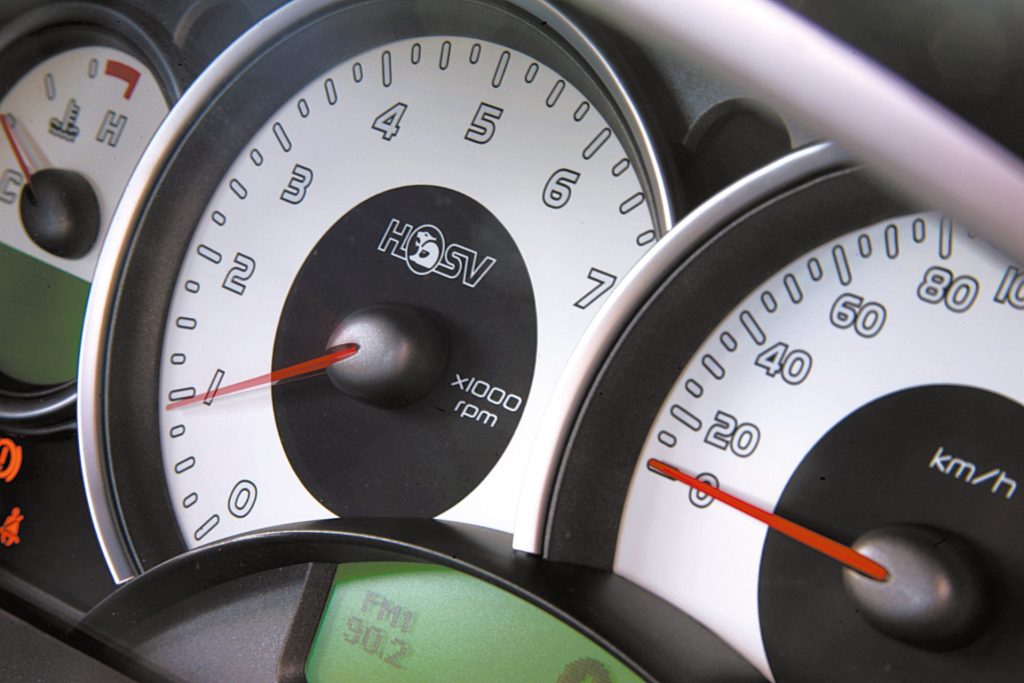
Both cars received an upgrade in the braking department during their last makeovers. The Clubsport got the previous medium tier of three brake options, while the more upmarket R8 version got the top. Over at FPV, there was a similar shuffle towards extra brake performance, the base GT now wearing the 355mm front and 328mm rear discs, and the four-piston front+single-piston rear Brembo calipers previously reserved for the GT-P (which now gets six-pot calipers up front and four-pots at the rear).

The FPV GT’s front discs are larger in diameter than the Clubsport’s 343mm discs, and feature extra cooling measures with plenty of cross-drilling and slotting evident. This would be a telling factor in our on-road photo shoot of the two cars. Although both achieved a 100-0km/h stop in the 35-metre range, the FPV’s stoppers were noticeably less prone to fading. By the time we turned the Clubbie around for the fourth time for Tom’s camera, the pedal was hitting the firewall!
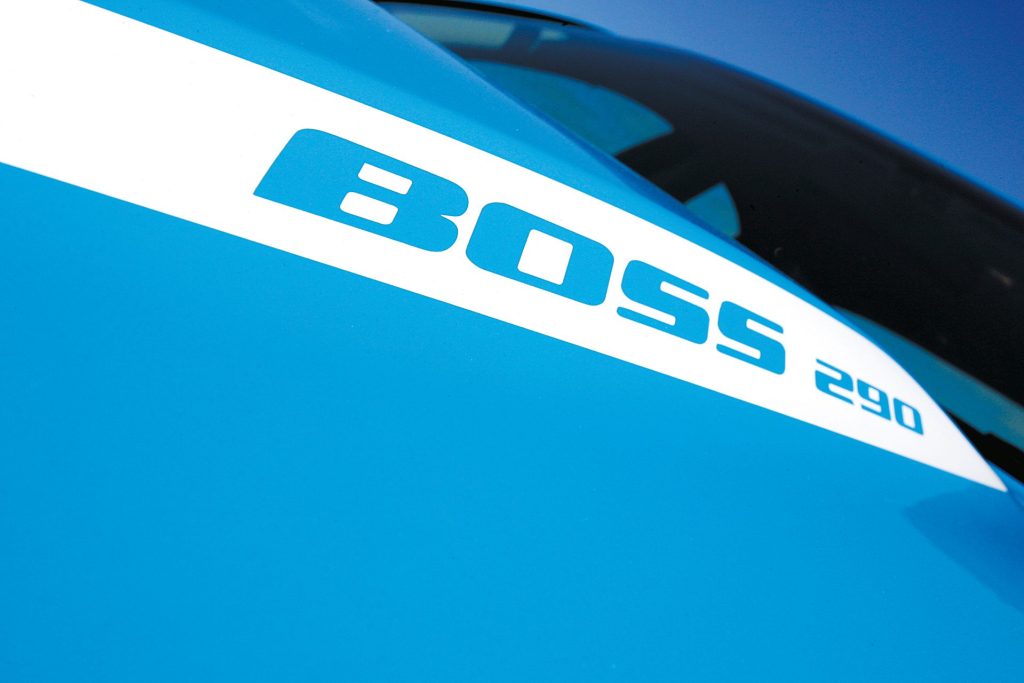
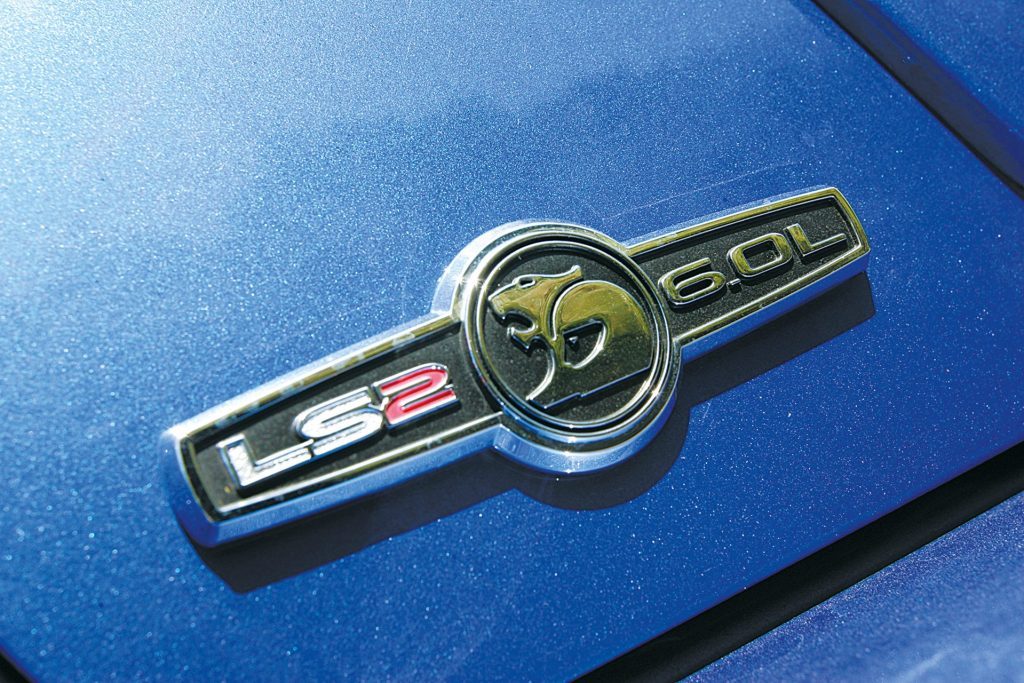
The FPV’s resistance to increased brake-pedal travel over a typically serpentine Kiwi back road is just one advantage the GT has over its HSV competition in our driving environment. Equally useful is the extra ‘stickiness’ and immunity to bump-steer provided by FPV’s more sophisticated rear suspension design. The GT may pay a price in increased mass for the extra hardware that controls its rear wheels, but it’s a penalty we accept gladly for the way it helps maintain the connection of the tyres to the road. While the GT has missed out on gaining the full Dynamic Stability Control system fitted to the Falcon XR8 during the BF upgrade, its absence is hardly noticed on the road thanks to the ‘mechanical’ grip already at the driver’s disposal. Like HSV, FPV fits a Traction Control system, and the calibration of its trigger point is slightly more adventurous than the Clubsport’s. Consider it a real aid for enthusiastic drivers, who may find the HSV’s TC system a little too nannying, and turn it off at the earliest opportunity.
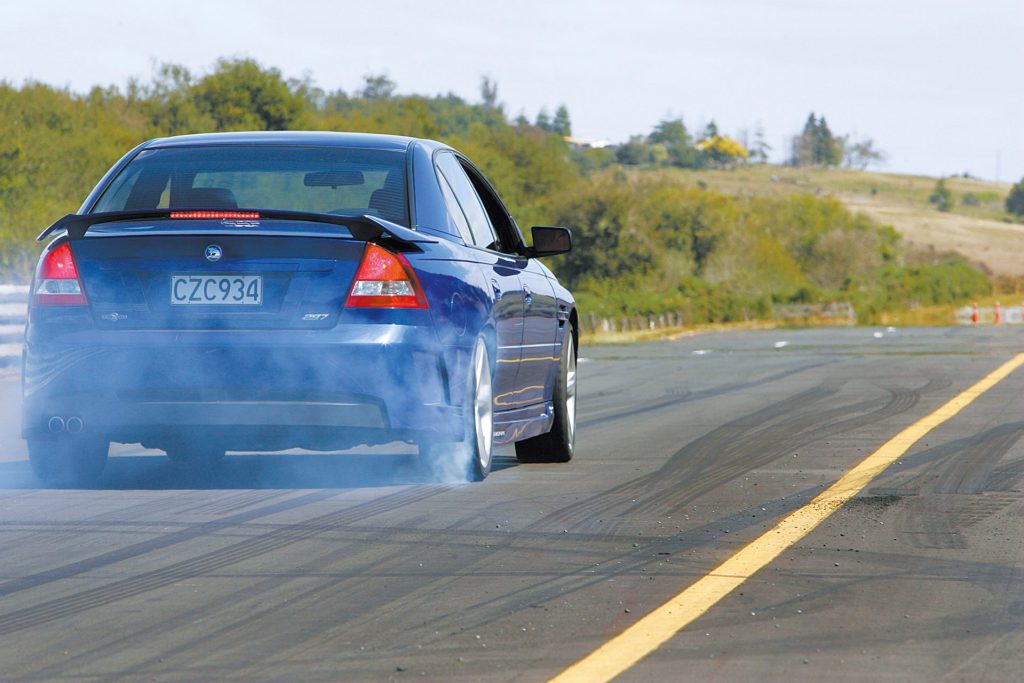
By doing so, the Clubsport pilot is placing his future in his ability to react, as the HSV driver needs to tread more carefully on the throttle while exiting bumpy corners. This isn’t due to any sudden arrival in power, as both large-displacement powertrains are driver-friendly in their flat and consistent torque curves. No, it’s simply because the Clubsport’s rear-end isn’t quite as adept as the FPV’s at maintaining its patches of tyre contact with the road.
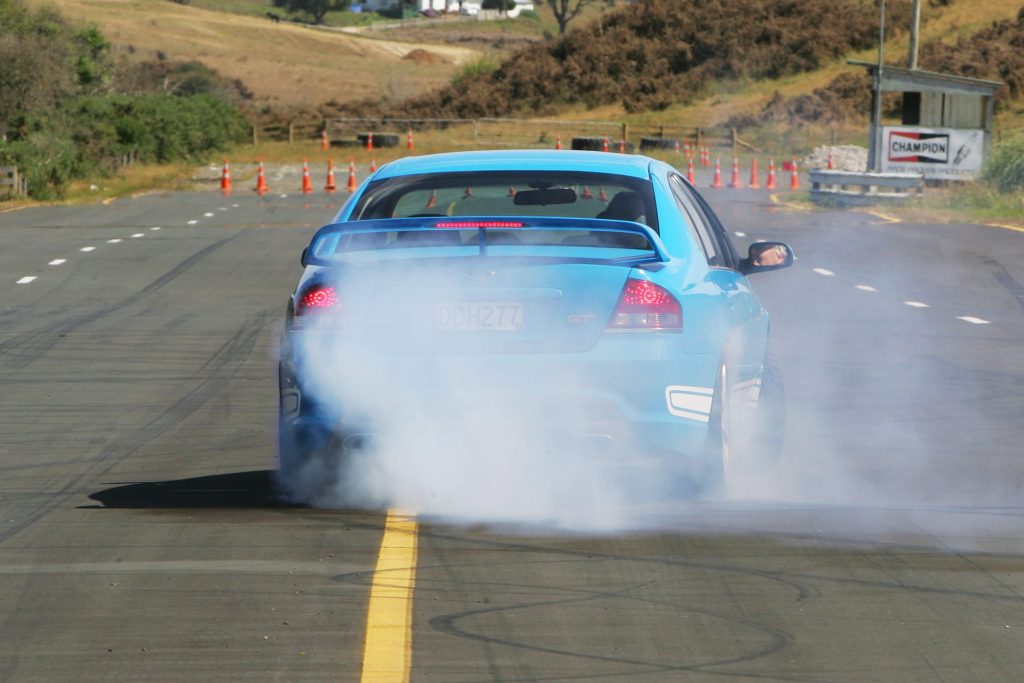
Up front, it’s the suspension geometry of the HSV that holds the advantage, the Clubsport providing extra ‘bite’ into the turns. The FPV is set up to understeer at a slightly earlier corner entry speed than the HSV, but the GT driver can get on the gas a little sooner when the ‘push’ arrives, secure in the tractive advantage of the FPV to transfer its power to an undulating surface. Both cars will drift through the corner apex in an enjoyable and controlled fashion, but the FPV feels a little more willing to surrender to the driver’s desires rather than follow its own instincts.
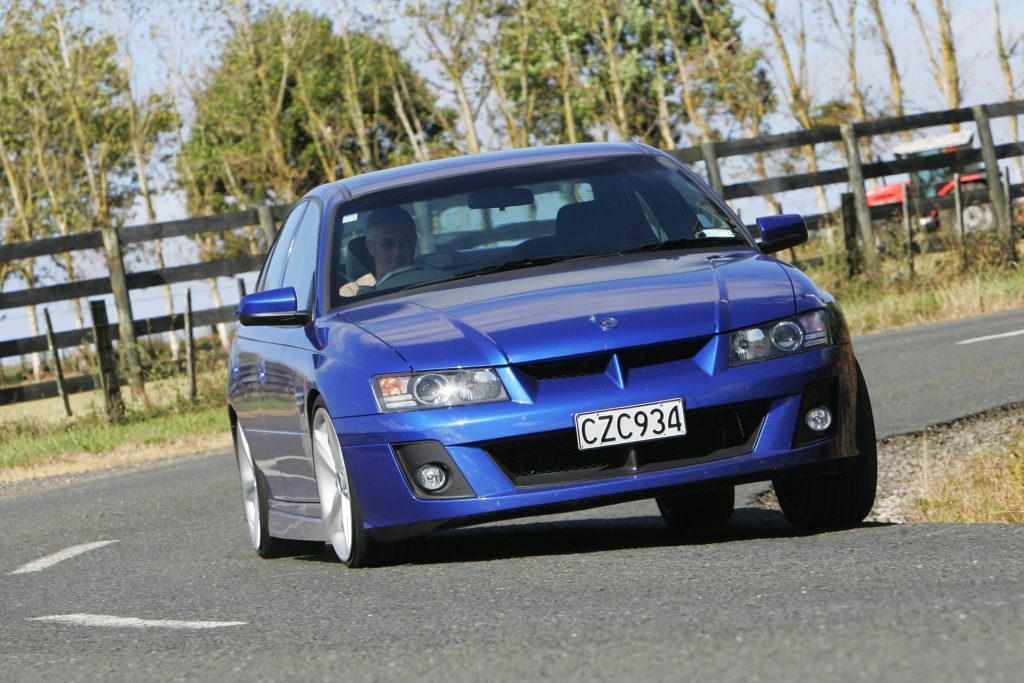
The latter could also apply to the steering of each. The HSV has the more urgent turn-in geometry, but the Clubsport’s wheel feels artificially heavy, like extra heft has been deliberately added because sports-minded drivers expect it. Well, not all of us do. If a wheel can provide plenty of feedback about what’s happening to the front tyres while requiring lighter inputs to manipulate it, this adds a feeling of effortless to chucking a big, heavy sports-saloon around. FPV has been quicker to understand this than HSV, so the GT’s wheel gives the driver a lesser workout than the Clubsport’s in slower corners and around town.
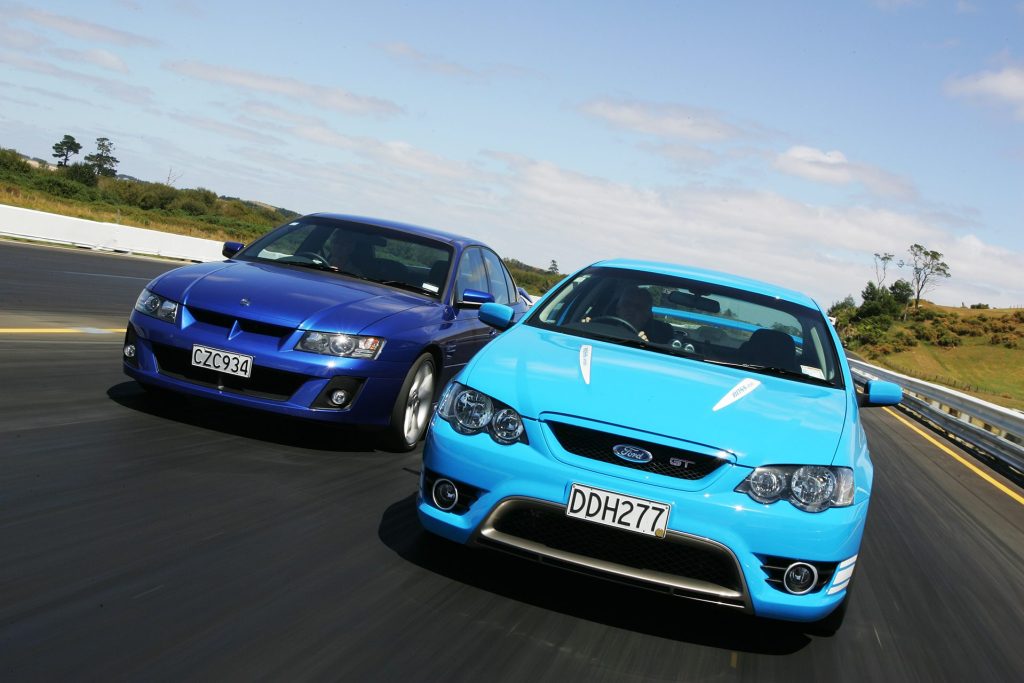
In terms of driving position, the Clubsport has more appeal. You can get the seat lower than the FPV’s, and set yourself up in the ‘swinging chimp’ stance favoured by most endurance racers for its ability to delay fatigue. It also brings the seat of the Clubsport driver’s pants closer to the centre of gravity, so giving better warning of any need to catch the HSV’s rambunctious tail.
Cabin finishing is a clear win to FPV, however. The interior feels more comparable with that of a Euro sports-sedan, particularly the door trimming and seat upholstery. FPV’s seats are also more figure-hugging than HSV’s, eschewing over-soft foam and inadequate bolsters to provide the greater lateral support, which is especially evident when playing with slip angles and cornering lines. In terms of dash design, both cars are ordinary Falcons and Commodores with a few added dials. The HSV’s extra clocks look better integrated than the FPV’s – which feature alloy-look plastic rims that fail completely to trigger any impression that they’re made from metal.
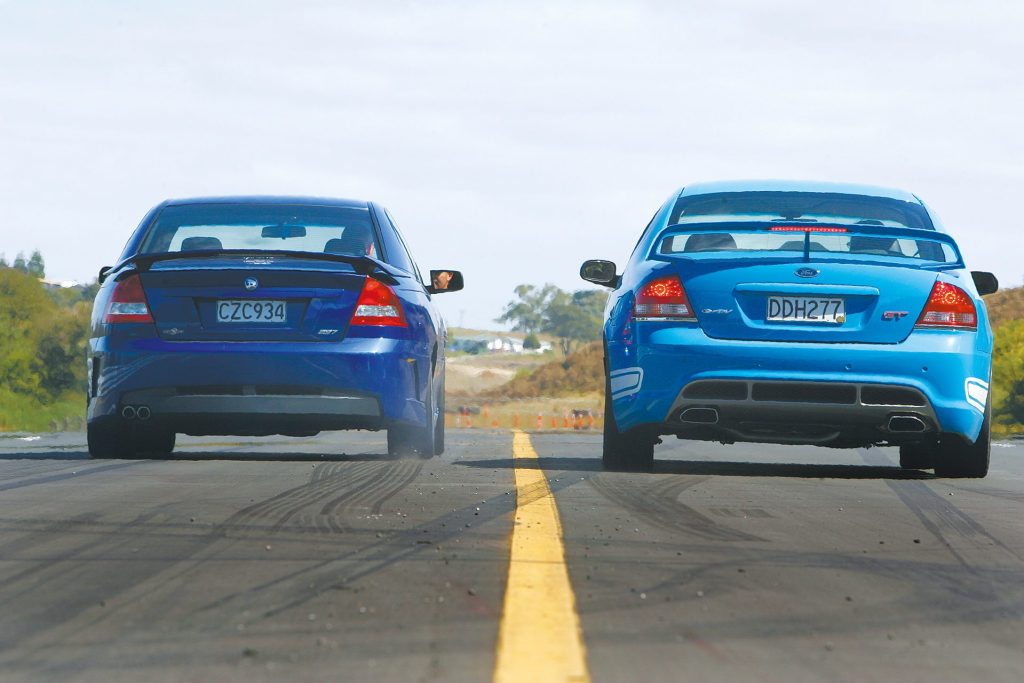
The battle between the top V8 sports-saloons from Ford and Holden is almost as long-running as this silver-topped baby-boomer’s lifespan. Yet legislation introduced at the start of 2006 dramatically changed the playing field on which these cars compete. The new challenge to face FPV and HSV has been to retain all the macho V8 appeal of their cars while meeting new noise and emission standards. One has tackled the problem successfully, while the other has suffered a reduction in character and emotive appeal in its rush to reach those standards. Not only does the FPV GT meet and exceed the new ADRs, it does so in a way that no traditional buyer of a V8 sports-saloon would notice. It therefore claims the crown as the best automatic Aussie V8 currently available.
| Model | 2006 FPV GT |
| Price | $77,590 |
| Engine | 5385cc, V8, EFI |
| Power/Torque | 290kW/520Nm |
| Drivetrain | 6-speed auto, RWD |
| Fuel Use | 15.0L/100km |
| 0-100km/h | 5.84sec |
| 80-120km/h | 3.58sec (102m) |
| 100-0km/h | 36.08m |
| Stability systems | ABS, ESP, EBD, TC |
| Luggage Capacity | 68L |
| Weight | 1858kg |
| Model | 2006 HSV Clubsport |
| Price | $75,900 |
| Engine | 5967cc, V8, EFI |
| Power/Torque | 297kW/530Nm |
| Drivetrain | 4-speed auto, RWD |
| Fuel Use | 15.5L/100km |
| 0-100km/h | 5.61sec |
| 80-120km/h | 3.41sec (100m) |
| 100-0km/h | 35.22m |
| Stability systems | ABS, ESP, BA, TC |
| Luggage Capacity | 75L |
| Weight | 1734kg |
This article originally appeared in the April 2006 issue of NZ Autocar Magazine.
Got a past review you’d like to see posted online?
Our digital archives go back to the year 2000 and we have tested the majority of the new cars released to the New Zealand market during that time.
Let us know which of our historic reviews you’d like to see by submitting the form below.


